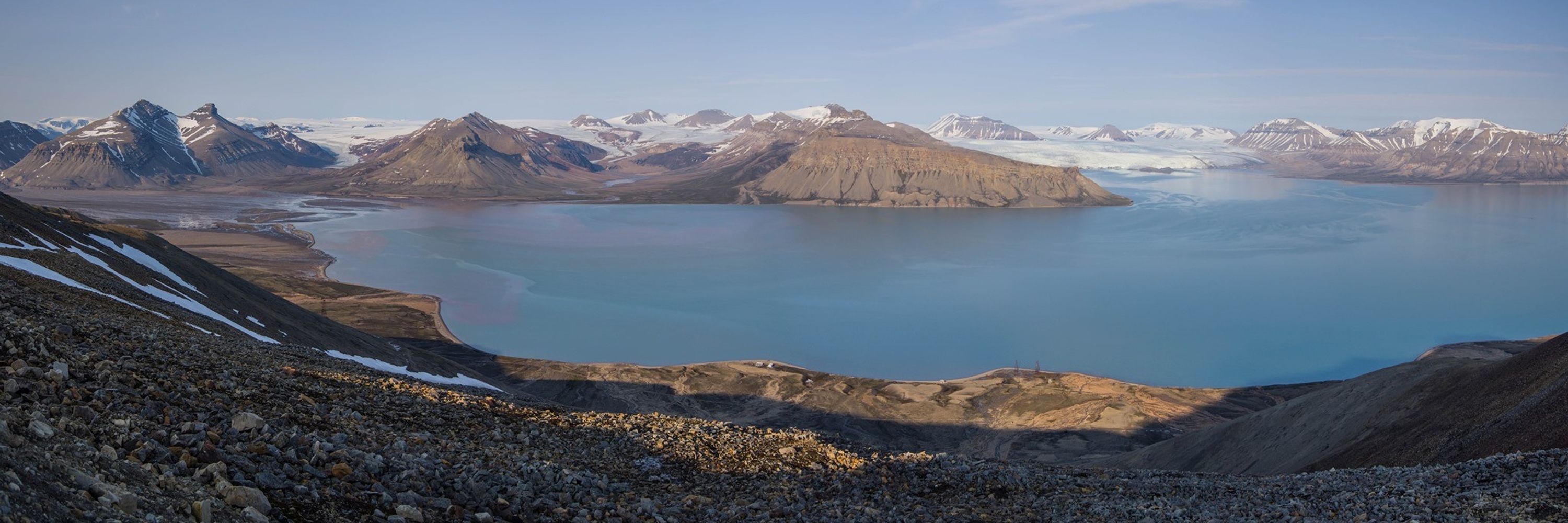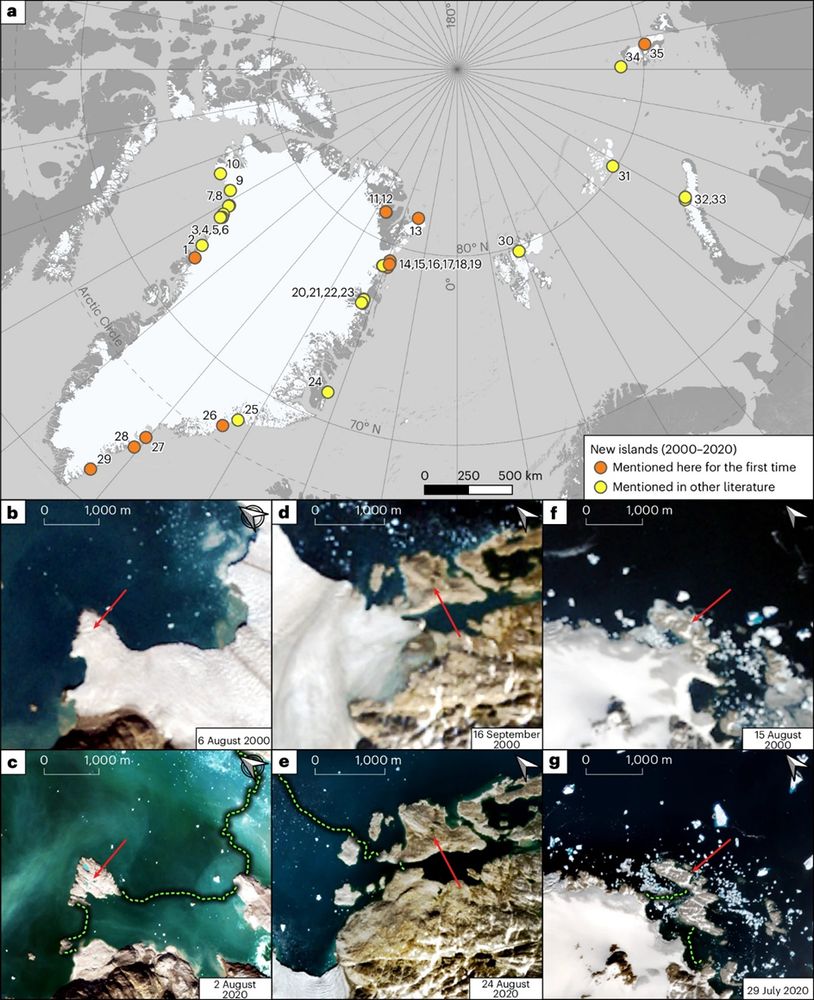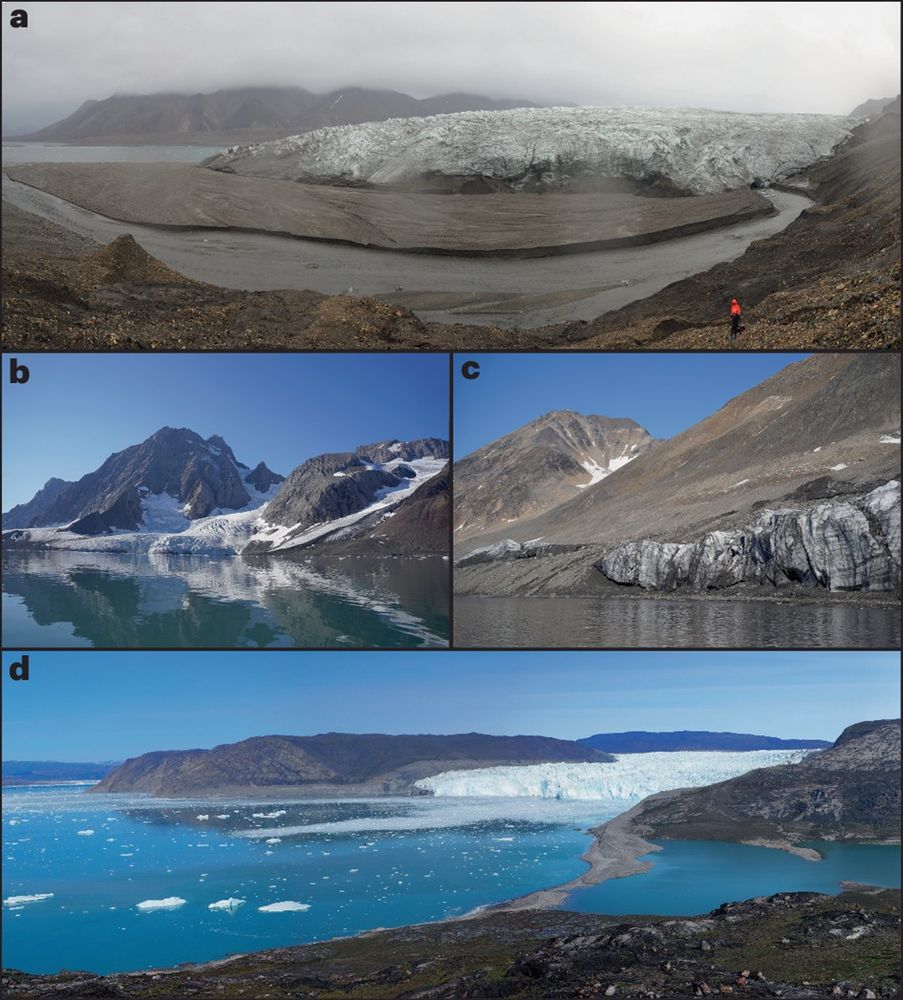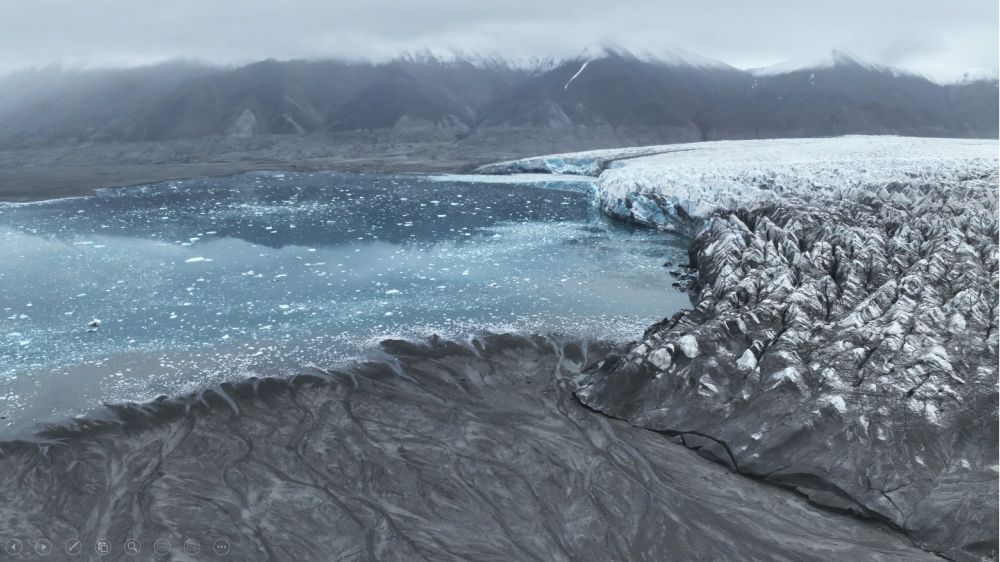
Centre for Polar Ecology
@cpecz.bsky.social
The Centre for Polar Ecology (CPE) was established in 2013, and its main goal is to conduct and support research in polar ecology at the Faculty of Science at the University of South Bohemia in České Budějovice, Czechia.
Hello Svalbard! Working hard near the Czech station Nostoc in Petuniabukta.
Here are some amazing pictures from our teammember Jan Kavan. He is doing some UAV surveying.
Left picture: Hørbyebreen outwash plain
Right picture: Ragnarbreen and its proglacial lake dammed by the LIA moraine
Here are some amazing pictures from our teammember Jan Kavan. He is doing some UAV surveying.
Left picture: Hørbyebreen outwash plain
Right picture: Ragnarbreen and its proglacial lake dammed by the LIA moraine


July 8, 2025 at 4:00 PM
Hello Svalbard! Working hard near the Czech station Nostoc in Petuniabukta.
Here are some amazing pictures from our teammember Jan Kavan. He is doing some UAV surveying.
Left picture: Hørbyebreen outwash plain
Right picture: Ragnarbreen and its proglacial lake dammed by the LIA moraine
Here are some amazing pictures from our teammember Jan Kavan. He is doing some UAV surveying.
Left picture: Hørbyebreen outwash plain
Right picture: Ragnarbreen and its proglacial lake dammed by the LIA moraine
P.S. The next Polar Ecology course is coming up in summer 2026. 😉
🧵👆
🧵👆




June 17, 2025 at 2:59 PM
P.S. The next Polar Ecology course is coming up in summer 2026. 😉
🧵👆
🧵👆
Let’s hope for exciting discoveries—and we wish Lucas the best of luck on this extraordinary mission to Mars! 🚀🔬

June 17, 2025 at 2:57 PM
Let’s hope for exciting discoveries—and we wish Lucas the best of luck on this extraordinary mission to Mars! 🚀🔬
The Rosalind Franklin rover will carry a 2-meter-long drill, allowing it to search beneath the Martian surface, where the odds of finding signs of life are much higher than on the surface, due to the harsh conditions above.

June 17, 2025 at 2:57 PM
The Rosalind Franklin rover will carry a 2-meter-long drill, allowing it to search beneath the Martian surface, where the odds of finding signs of life are much higher than on the surface, due to the harsh conditions above.
Lucas told us that the Polar Ecology course in Svalbard played a key role in preparing him for this amazing opportunity at ESA. And it was also the key factor on his CV. We're thrilled to hear that!



June 17, 2025 at 2:56 PM
Lucas told us that the Polar Ecology course in Svalbard played a key role in preparing him for this amazing opportunity at ESA. And it was also the key factor on his CV. We're thrilled to hear that!
Using data from current orbiters like NASA’s Mars Reconnaissance Orbiter and ESA’s Mars Express, the team is identifying target areas that could hold clues to past—or even present—life on Mars.


June 17, 2025 at 2:55 PM
Using data from current orbiters like NASA’s Mars Reconnaissance Orbiter and ESA’s Mars Express, the team is identifying target areas that could hold clues to past—or even present—life on Mars.
Back then, much of Mars’s northern hemisphere may have been covered by a vast ocean.

June 17, 2025 at 2:54 PM
Back then, much of Mars’s northern hemisphere may have been covered by a vast ocean.
Lucas is involved in mapping the rover’s landing site: Oxia Planum, an area that is astrobiologically promising because it's believed to have been part of a Martian coastline billions of years ago.

June 17, 2025 at 2:54 PM
Lucas is involved in mapping the rover’s landing site: Oxia Planum, an area that is astrobiologically promising because it's believed to have been part of a Martian coastline billions of years ago.
He’s now part of the team planning the upcoming ExoMars rover mission, named after the pioneering scientist Rosalind Franklin. The launch is scheduled for 2028. @exploration.esa.int

June 17, 2025 at 2:54 PM
He’s now part of the team planning the upcoming ExoMars rover mission, named after the pioneering scientist Rosalind Franklin. The launch is scheduled for 2028. @exploration.esa.int
Lucas says that without studying at our university—and especially without taking the Polar Ecology course—he would never have landed his current role at the European Space Agency. @esa.int

June 17, 2025 at 2:53 PM
Lucas says that without studying at our university—and especially without taking the Polar Ecology course—he would never have landed his current role at the European Space Agency. @esa.int
The search for life on Mars.
That’s the main mission of Lucas Fernandez, a graduate of the Faculty of Science at the University of South Bohemia.
🧵👇
That’s the main mission of Lucas Fernandez, a graduate of the Faculty of Science at the University of South Bohemia.
🧵👇

June 17, 2025 at 2:52 PM
The search for life on Mars.
That’s the main mission of Lucas Fernandez, a graduate of the Faculty of Science at the University of South Bohemia.
🧵👇
That’s the main mission of Lucas Fernandez, a graduate of the Faculty of Science at the University of South Bohemia.
🧵👇
We wish you successful and safe landing and thank you for these pictures!
April 4, 2025 at 11:38 AM
We wish you successful and safe landing and thank you for these pictures!
And it is so nice to see the archipelago including Longyearbyen as well as (still frozen!) Petuniabukta on their beautiful videos. Their mission is not just a trip. For example, they are also studying aurora borealis together with the SolarMAX program.

April 4, 2025 at 11:36 AM
And it is so nice to see the archipelago including Longyearbyen as well as (still frozen!) Petuniabukta on their beautiful videos. Their mission is not just a trip. For example, they are also studying aurora borealis together with the SolarMAX program.
The mission of four private astronauts is called Fram2 - a reference to the Roald Amundsen's legendary expedition ship Fram. They all have met previously on Svalbard.

April 4, 2025 at 11:35 AM
The mission of four private astronauts is called Fram2 - a reference to the Roald Amundsen's legendary expedition ship Fram. They all have met previously on Svalbard.
Oh, hello Svalbard! A completely new perspective on "our" archipelago thanks to so-called framonauts from the board of the spaceship Crew Dragon.

April 4, 2025 at 11:34 AM
Oh, hello Svalbard! A completely new perspective on "our" archipelago thanks to so-called framonauts from the board of the spaceship Crew Dragon.
The loss of marine-terminating glaciers also affects life in the Arctic. These regions, where the atmosphere, cryosphere, and hydrosphere connect, are biodiversity hotspots. Losing them means losing one of the richest bio-hotspots in the Arctic.

March 21, 2025 at 3:43 PM
The loss of marine-terminating glaciers also affects life in the Arctic. These regions, where the atmosphere, cryosphere, and hydrosphere connect, are biodiversity hotspots. Losing them means losing one of the richest bio-hotspots in the Arctic.
But that's not all. As glaciers retreat, they don’t just expose new coastlines—they also uncover new islands. Jan et al. identified 35 new islands larger than 0.5 km², most of them in Greenland.

March 21, 2025 at 3:42 PM
But that's not all. As glaciers retreat, they don’t just expose new coastlines—they also uncover new islands. Jan et al. identified 35 new islands larger than 0.5 km², most of them in Greenland.
For example, these newly formed paraglacial coastlines are highly dynamic, exhibiting high sediment fluxes and rapidly evolving landforms. What does this mean?

March 21, 2025 at 3:41 PM
For example, these newly formed paraglacial coastlines are highly dynamic, exhibiting high sediment fluxes and rapidly evolving landforms. What does this mean?
Thanks to detailed analyses of satellite images, Jan et al. discovered that most of these new coastlines are in Greenland. This could have significant impacts on local ecosystems and communities.


March 21, 2025 at 3:39 PM
Thanks to detailed analyses of satellite images, Jan et al. discovered that most of these new coastlines are in Greenland. This could have significant impacts on local ecosystems and communities.
We are stoked to present a brand-new @natclimchange.bsky.social paper by our Jan Kavan! ❤️
Did you know that between 2000 and 2020, retreat of marine-terminating glaciers has exposed more than 2,400 km of new coastline in the Arctic?
🧵👇
Did you know that between 2000 and 2020, retreat of marine-terminating glaciers has exposed more than 2,400 km of new coastline in the Arctic?
🧵👇

March 21, 2025 at 3:37 PM
We are stoked to present a brand-new @natclimchange.bsky.social paper by our Jan Kavan! ❤️
Did you know that between 2000 and 2020, retreat of marine-terminating glaciers has exposed more than 2,400 km of new coastline in the Arctic?
🧵👇
Did you know that between 2000 and 2020, retreat of marine-terminating glaciers has exposed more than 2,400 km of new coastline in the Arctic?
🧵👇
In the partly and fully vegetated tundra willows provided microbes with limited N via exudation of low molecular mass organic acids with specific composition which allowed them to utilize available P from older soil organic matter and significantly accelerate their microbial growth.

March 7, 2025 at 12:34 PM
In the partly and fully vegetated tundra willows provided microbes with limited N via exudation of low molecular mass organic acids with specific composition which allowed them to utilize available P from older soil organic matter and significantly accelerate their microbial growth.
The measured rate of C exudation by roots was comparable at all habitats, but the N and P exudation was found to be affected by plant root stoichiometry.

March 7, 2025 at 12:33 PM
The measured rate of C exudation by roots was comparable at all habitats, but the N and P exudation was found to be affected by plant root stoichiometry.
Our research further reveals the detailed effect of plant root stoichiometry on nutrient content in exudates, and their ability to regulate microbial activity to cope with harsh conditions after deglaciation.

March 7, 2025 at 12:32 PM
Our research further reveals the detailed effect of plant root stoichiometry on nutrient content in exudates, and their ability to regulate microbial activity to cope with harsh conditions after deglaciation.
The results confirm the importance of dwarf willow colonization in enhancing nutrient availability and microbial activity during soil development after deglaciation, especially in early-stage soils.

March 7, 2025 at 12:32 PM
The results confirm the importance of dwarf willow colonization in enhancing nutrient availability and microbial activity during soil development after deglaciation, especially in early-stage soils.
Our new paper studies the rhizosphere effect of one of the pioneer plants in Svalbard, Salix polaris, on biochemical parameters of habitats at different stages of vegetation development.

March 7, 2025 at 12:30 PM
Our new paper studies the rhizosphere effect of one of the pioneer plants in Svalbard, Salix polaris, on biochemical parameters of habitats at different stages of vegetation development.

